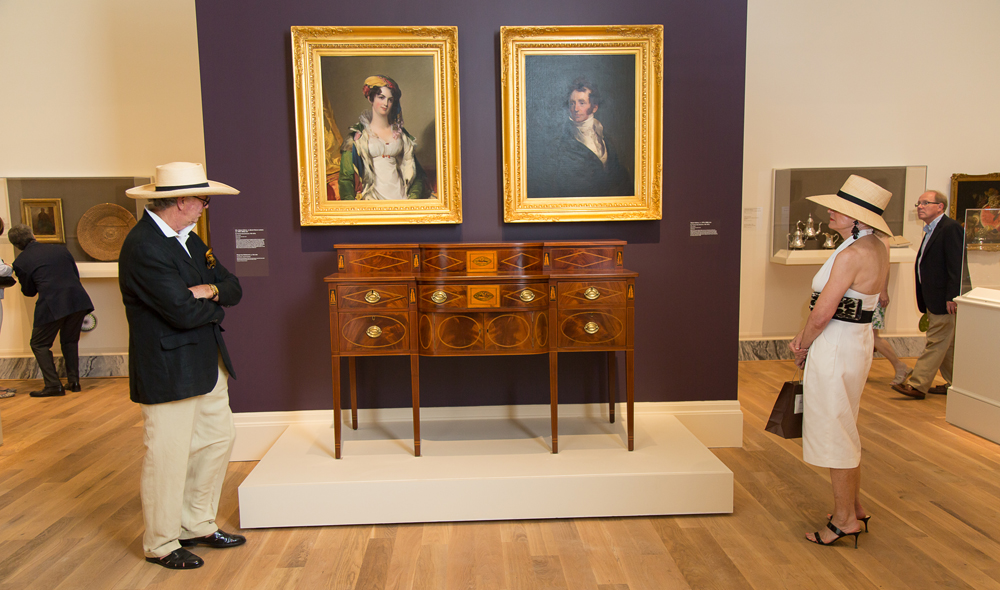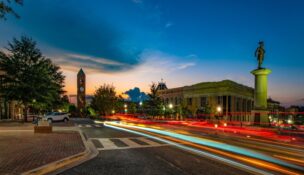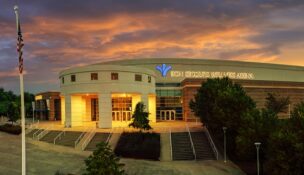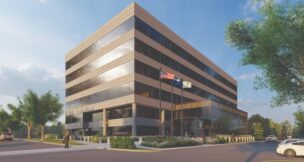Gibbes’ economic impact ripples throughout Lowcountry
Staff //January 30, 2018//

A study by The Citadel’s Tommy and Victoria Baker School of Business found that The Gibbes Museum of Art made an economic impact of $120 million on the Charleston region in its first year since renovations finished, surpassing museum officials’ expectations.
The study also found that the renovation itself made an impact of $30 million on the region because of construction costs; architectural design of the museum; developer and consulting fees; and relocation of artwork during the renovation.
“The arts make money, and anybody who says otherwise is incorrect,” said Angela Mack, executive director of the museum.
A class at the business school conducted a study of the Charleston Symphony Orchestra’s economic impact in 2015. After the renovation at the Gibbes was completed in 2016, the museum contacted The Citadel and applied to be the next nonprofit that the school studied.
“These studies are pretty cut-and-paste in terms of the methodology for doing them,” said Russell Sobel, a professor who assisted with the framework of the study. “The students did have to do some extensive surveys of patrons and examination of the budget.”
Ronald Green, the professor whose class did the study, did not respond to requests for comment.
Mack said the Gibbes was thrilled that The Citadel agreed to focus on the economic impact of the museum.
“The Citadel was terrific to work with,” she said. “They were incredibly diligent in pulling together their data.”
Mack said she was surprised by the level of impact the museum has on the region.
“Given the size of our budget and the number of people that the institution saw annually before we reopened to the public after the renovation, I assumed our impact would be somewhere around $25 million to $30 million,” she said. “And when they came back with the $120 million, we were just blown away.”
Another surprise, Mack said, was that the museum will be able to use the multiplier used in the impact study to continue monitoring the museum’s impact, which Mack said the museum can use when applying for grants.
The Gibbes’ budget for 2017 was $2.8 million, up from $2.2 million in 2015 before the renovation. The average museum patron spent approximately $1,188 per visit on food, lodging, transportation and recreation in the Charleston area. Approximately 57% of patrons traveled more than 50 miles to visit the Gibbes, the study said, and 70% of visitors came from beyond the surrounding three-county area.
Mack said the museum tries to make sure it caters to patrons who come to the Gibbes to be immersed in Charleston culture and learn more about the Lowcountry, and to those living in the Lowcountry who want a window to experiences beyond Charleston.
“To me, what the study was able to reinforce is this relationship and this balance that we try to achieve every year with our programming between the visitors who come to Charleston and the people who live here,” she said. “And what this sort of reinforced is that this balance continues and that balance is important.”
Patron comments at the end of the report, Mack said, highlighted specific needs the museum wants to address. Some of the most common patron suggestions were special exhibits, putting famous artwork on display and more variety in exhibits.
“It was interesting to read these comments because in many ways it reinforced something we already knew, but at the same time it helped to make more specific the need to continue creating that balance,” she said.
With the study in hand, Mack said the museum is now implementing a strategic plan that it had begun writing while the renovation was underway.
“We’ve never had a 10-year plan before,” she said. “We’ve always been working on rather short-term plans, three years. In fact, since I’ve been director, we’ve had two three-year plans, and so this is the first time that we’re really looking into the future and working on ways to improve the institution and to meet the needs of the current generation as well as future ones.”
The primary purpose of the 10-year plan, Mack said, is to focus the museum’s efforts on building its endowment to support larger exhibitions. She added that the plan will also assist the museum in better marketing the connection between visual arts and social justice initiatives.
“People who love the arts also are very interested in social justice, conservation and the environment, innovation, and health and wellness,” Mack said. “And when we were preparing the 10-year plan, it became quite clear that while we were doing a lot of this already in terms of the kinds of exhibitions and programs we were creating, we didn’t really … emphasize it in such a way that these themes were being fulfilled.”
Mack said the museum is committed to continuing its work in impacting the Charleston community both economically and culturally.
“The visual arts can have a huge impact on the way people think and absorb information about … areas that are important to our community,” she said.
This story originally appeared in the Jan. 8, 2018, print edition of the Charleston Regional Business Journal.
l

















